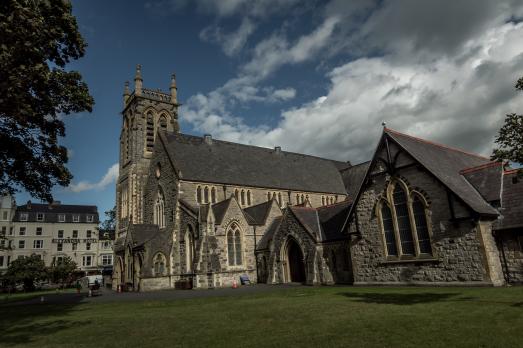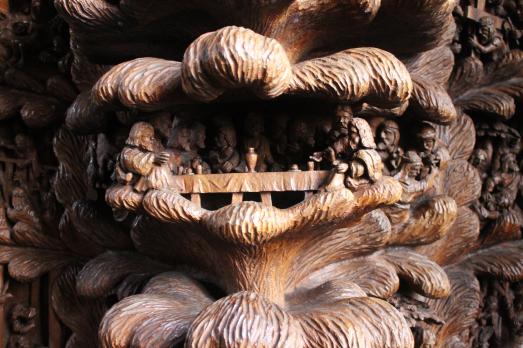The ancient church of St Tudno on the Great Orme was the original church of Llandudno, from which the town takes its name, but in 1839 St Tudno’s was damaged by a severe storm and it was decided not to repair the church but to build a new one nearer the centre of what was then the village of Llandudno.
By 1860 Llandudno was developing as a fashionable tourist centre and Holy Trinity was built in the new town to cater for the increasing number of visitors. The land was given by the Mostyn Estate and their architect, George Felton, designed the church. The original part of the church was completed in 1872 and consecrated in 1874.
Holy Trinity is a fine example of a Victorian church built in a style prevalent in the 13th century, finished on the exterior with local limestone and lined with polychromatic brickwork, with Bath and Caen stone dressings.
A tour of the church will allow the beauty of the stained glass windows and the intricacies of the carvings to be appreciated.
Wood carvings in the nave include two Thompson Mice and the unique Angel.
The famous woodworker, Robert Thompson, always carved a tiny mouse as his signature and these can be found on the choir vestry door and the screen, both in the south aisle. The Angel was carved in the 1970s by Handel Edwards (1924-2011) from South Wales and within the Angel’s outspread wings are are carved scenes and miracles from the life of Christ.



